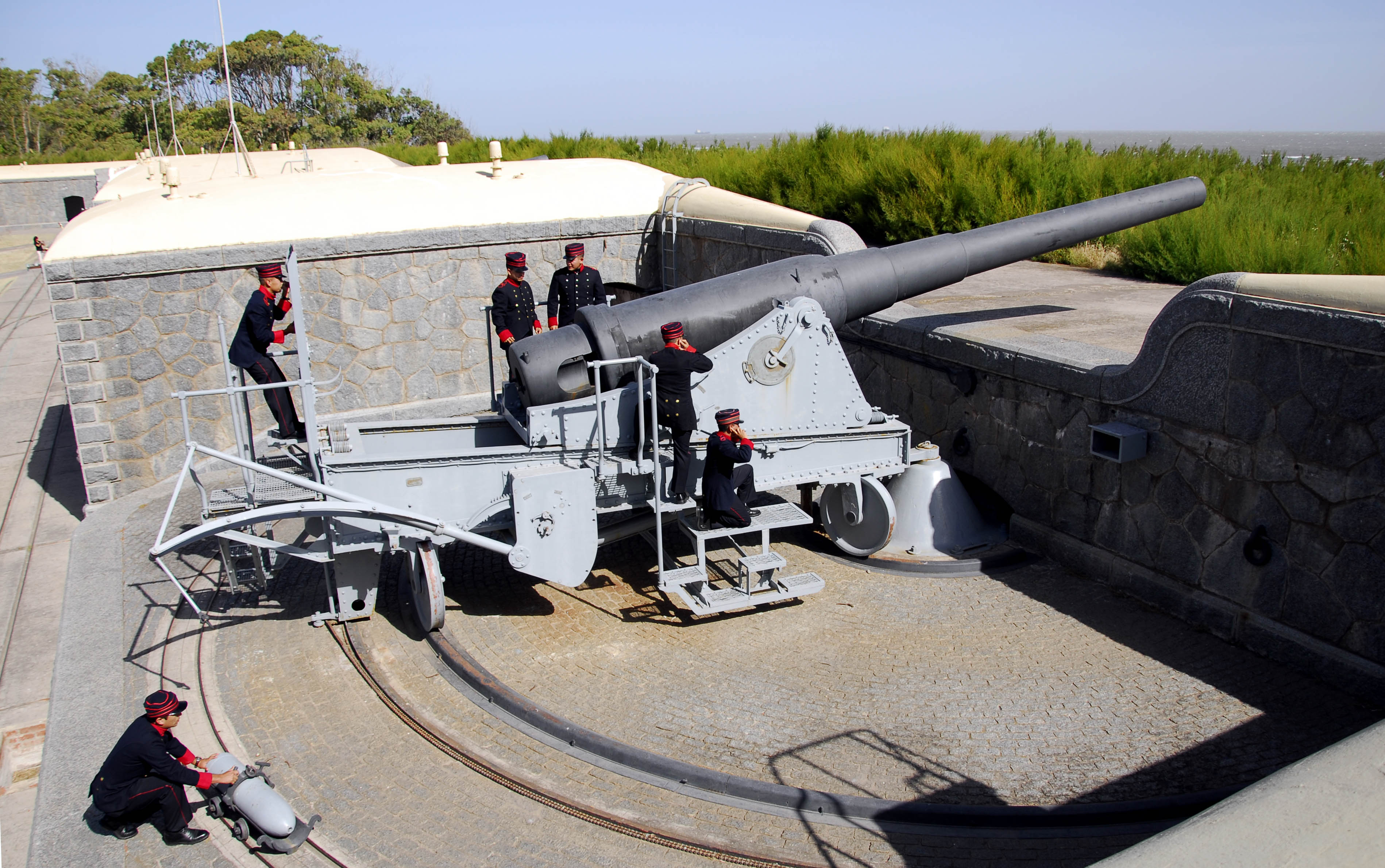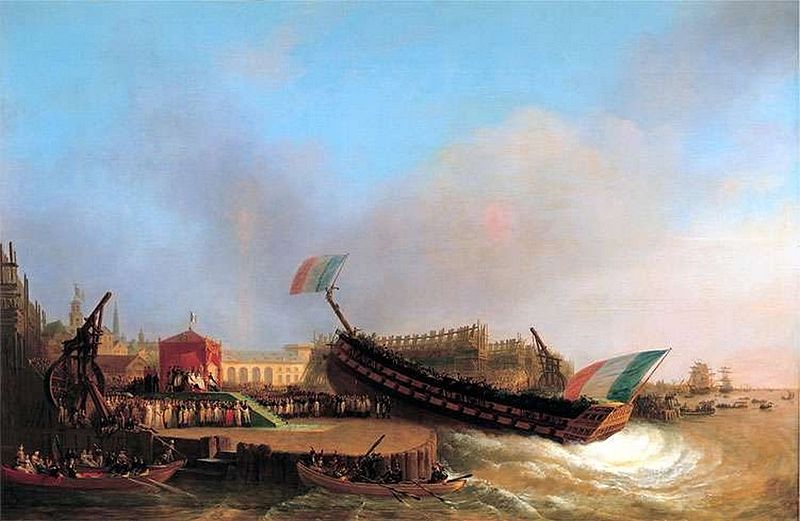|
ARA Sarandí (D-13)
ARA ''Sarandí'' is the fourth and last ship of the MEKO 360H2 series of destroyers built for the Argentine Navy. The ship is also the fourth ship in the Argentine Navy to bear that name. ''Sarandí'' is the name of a victory of the Argentine army during the Cisplatine War. The ship, along with the rest of the Argentine navy is poorly maintained and has inadequate staff training due to a lack of funding and import restrictions. In 2003, the ship fired on a friendly Brazilian warship during a joint training exercise. In 2012, the ''Almirante Brown'' class were short of spare parts and suffering engine problems, plus all their ordnance was past its expiry date. Origin ''Sarandí'' and her sister ships were authorized under the Naval Construction National Plan of 1974, an initiative by the Argentine Navy to replace old World War II-vintage warships which were nearing the end of their operational lives. A contract was signed with the Blohm + Voss Shipyards in Hamburg, West Germa ... [...More Info...] [...Related Items...] OR: [Wikipedia] [Google] [Baidu] |
Blohm + Voss
Blohm is a surname. Notable people with the surname include: * Hans Blohm C.M. (born 1927), photographer and author * Hermann Blohm (1848–1930), German businessman and co-founder of German company Blohm+Voss * Linn Blohm (born 1992), Swedish handball player for IK Sävehof and the Swedish national team * Robert Blohm (born 1948), American and Canadian investment banker, economist and statistician, professor in China's Central University of Finance and Economics * Tom Blohm (1920–2000), Norwegian football player See also * Blohm + Voss, a German shipbuilding and engineering works * Blom * Bohm (other) {{surname de:Blohm ... [...More Info...] [...Related Items...] OR: [Wikipedia] [Google] [Baidu] |
Almirante Brown-class Destroyer
The ''Almirante Brown'' class is a class ( MEKO 360H2 type) of warships built for the Argentine Navy. They were commissioned between 1983 and 1984, after the Falklands War. The class comprises four ships; , , and . They are classified as either frigates or destroyers by different publications. The MEKO 360 type warships are based on modular designs which allow quick changes to the vessel's armaments depending on mission requirements. The modular nature of the construction also allows the ships to be modernized or refitted with greater ease. Six vessels were initially ordered, however two ships were cancelled and replaced with orders for MEKO 140 type hulls. Ordered in 1979, construction of the ships was delayed as the British turbines were embargoed after the Falklands War. Furthermore, the acquisition of helicopters for the vessels has seen many incarnations. They were initially intended to be equipped with Westland Lynx helicopters, but the order was cancelled in 1982. The p ... [...More Info...] [...Related Items...] OR: [Wikipedia] [Google] [Baidu] |
Puerto Belgrano
Port Belgrano Naval Base ( es, Base Naval Puerto Belgrano - BNPB) is the largest naval base of the Argentine Navy, situated next to Punta Alta, near Bahía Blanca, about south of Buenos Aires. It is named after the brigantine ''General Belgrano'' (named after Manuel Belgrano) which sounded the area in late 1824. Home of the Argentine Seas Fleet ( ''Flota de Mar''), it concentrates the major ships and arsenals; and is close to the main bases of other Argentine Navy organisations: Marine's camp ''Baterías'' and Naval aviation's air base ''Comandante Espora'' ( es, Base Aeronaval Comandante Espora - BACE) . History Designed by Italian engineer Luis Luiggi, Puerto Belgrano opened on November 30, 1896, under the name Puerto Militar ( en, Military Port). In 1911, the French-owned railway company Ferrocarril Rosario y Puerto Belgrano opened a broad gauge () line between Puerto Belgrano and Rosario. The harbor was renamed Puerto Belgrano in 1923. The base grew in importanc ... [...More Info...] [...Related Items...] OR: [Wikipedia] [Google] [Baidu] |
Sea Trial
A sea trial is the testing phase of a watercraft (including boats, ships, and submarines). It is also referred to as a " shakedown cruise" by many naval personnel. It is usually the last phase of construction and takes place on open water, and it can last from a few hours to many days. Sea trials are conducted to measure a vessel's performance and general seaworthiness. Testing of a vessel's speed, maneuverability, equipment and safety features are usually conducted. Usually in attendance are technical representatives from the builder (and from builders of major systems), governing and certification officials, and representatives of the owners. Successful sea trials subsequently lead to a vessel's certification for commissioning and acceptance by its owner. Although sea trials are commonly thought to be conducted only on new-built vessels (referred by shipbuilders as 'builders trials'), they are regularly conducted on commissioned vessels as well. In new vessels, they are us ... [...More Info...] [...Related Items...] OR: [Wikipedia] [Google] [Baidu] |
Ceremonial Ship Launching
Ceremonial ship launching involves the performance of ceremonies associated with the process of transferring a vessel to the water. It is a nautical tradition in many cultures, dating back thousands of years, to accompany the physical process with ceremonies which have been observed as public celebration and a solemn blessing, usually but not always, in association with the launch itself. Ship launching imposes stresses on the ship not met during normal operation and, in addition to the size and weight of the vessel, represents a considerable engineering challenge as well as a public spectacle. The process also involves many traditions intended to invite good luck, such as christening by breaking a sacrificial bottle of champagne over the bow (ship), bow as the ship is named aloud and launched. Methods There are three principal methods of conveying a new ship from building site to water, only two of which are called "launching". The oldest, most familiar, and most widel ... [...More Info...] [...Related Items...] OR: [Wikipedia] [Google] [Baidu] |
Keel Laying
Laying the keel or laying down is the formal recognition of the start of a ship's construction. It is often marked with a ceremony attended by dignitaries from the shipbuilding company and the ultimate owners of the ship. Keel laying is one of the four specially celebrated events in the life of a ship; the others are launching, commissioning and decommissioning. In earlier times, the event recognized as the keel laying was the initial placement of the central timber making up the backbone of a vessel, called the keel. As steel ships replaced wooden ones, the central timber gave way to a central steel beam. Modern ships are most commonly built in a series of pre-fabricated, complete hull sections rather than around a single keel. The event recognized as the keel laying is the first joining of modular components, or the lowering of the first module into place in the building dock. It is now often called "keel authentication", and is the ceremonial beginning of the ship's li ... [...More Info...] [...Related Items...] OR: [Wikipedia] [Google] [Baidu] |
Keel
The keel is the bottom-most longitudinal structural element on a vessel. On some sailboats, it may have a hydrodynamic and counterbalancing purpose, as well. As the laying down of the keel is the initial step in the construction of a ship, in British and American shipbuilding traditions the construction is dated from this event. Etymology The word "keel" comes from Old English , Old Norse , = "ship" or "keel". It has the distinction of being regarded by some scholars as the first word in the English language recorded in writing, having been recorded by Gildas in his 6th century Latin work '' De Excidio et Conquestu Britanniae'', under the spelling ''cyulae'' (he was referring to the three ships that the Saxons first arrived in). is the Latin word for "keel" and is the origin of the term careen (to clean a keel and the hull in general, often by rolling the ship on its side). An example of this use is Careening Cove, a suburb of Sydney, Australia, where careening was carried ... [...More Info...] [...Related Items...] OR: [Wikipedia] [Google] [Baidu] |
West Germany
West Germany is the colloquial term used to indicate the Federal Republic of Germany (FRG; german: Bundesrepublik Deutschland , BRD) between its formation on 23 May 1949 and the German reunification through the accession of East Germany on 3 October 1990. During the Cold War, the western portion of Germany and the associated territory of West Berlin were parts of the Western Bloc. West Germany was formed as a political entity during the Allied occupation of Germany after World War II, established from eleven states formed in the three Allied zones of occupation held by the United States, the United Kingdom, and France. The FRG's provisional capital was the city of Bonn, and the Cold War era country is retrospectively designated as the Bonn Republic. At the onset of the Cold War, Europe was divided between the Western and Eastern blocs. Germany was divided into the two countries. Initially, West Germany claimed an exclusive mandate for all of Germany, representing itself ... [...More Info...] [...Related Items...] OR: [Wikipedia] [Google] [Baidu] |
Hamburg
Hamburg (, ; nds, label=Hamburg German, Low Saxon, Hamborg ), officially the Free and Hanseatic City of Hamburg (german: Freie und Hansestadt Hamburg; nds, label=Low Saxon, Friee un Hansestadt Hamborg),. is the List of cities in Germany by population, second-largest city in Germany after Berlin, as well as the overall List of cities in the European Union by population within city limits, 7th largest city and largest non-capital city in the European Union with a population of over 1.85 million. Hamburg's urban area has a population of around 2.5 million and is part of the Hamburg Metropolitan Region, which has a population of over 5.1 million people in total. The city lies on the River Elbe and two of its tributaries, the River Alster and the Bille (Elbe), River Bille. One of Germany's 16 States of Germany, federated states, Hamburg is surrounded by Schleswig-Holstein to the north and Lower Saxony to the south. The official name reflects History of Hamburg, Hamburg's history ... [...More Info...] [...Related Items...] OR: [Wikipedia] [Google] [Baidu] |
World War II
World War II or the Second World War, often abbreviated as WWII or WW2, was a world war that lasted from 1939 to 1945. It involved the World War II by country, vast majority of the world's countries—including all of the great powers—forming two opposing military alliances: the Allies of World War II, Allies and the Axis powers. World War II was a total war that directly involved more than 100 million Military personnel, personnel from more than 30 countries. The major participants in the war threw their entire economic, industrial, and scientific capabilities behind the war effort, blurring the distinction between civilian and military resources. Air warfare of World War II, Aircraft played a major role in the conflict, enabling the strategic bombing of population centres and deploying the Atomic bombings of Hiroshima and Nagasaki, only two nuclear weapons ever used in war. World War II was by far the List of wars by death toll, deadliest conflict in hu ... [...More Info...] [...Related Items...] OR: [Wikipedia] [Google] [Baidu] |
Sister Ship
A sister ship is a ship of the same class or of virtually identical design to another ship. Such vessels share a nearly identical hull and superstructure layout, similar size, and roughly comparable features and equipment. They often share a common naming theme, either being named after the same type of thing or person (places, constellations, heads of state) or with some kind of alliteration. Typically the ship class is named for the first ship of that class. Often, sisters become more differentiated during their service as their equipment (in the case of naval vessels, their armament) are separately altered. For instance, the U.S. warships , , , and are all sister ships, each being an . Perhaps the most famous sister ships were the White Star Line's s, consisting of , and . As with some other liners, the sisters worked as running mates. Other sister ships include the Royal Caribbean International's and . ''Half-sister'' refers to a ship of the same class but with som ... [...More Info...] [...Related Items...] OR: [Wikipedia] [Google] [Baidu] |
Military Exercise
A military exercise or war game is the employment of military resources in training for military operations, either exploring the effects of warfare or testing strategies without actual combat. This also serves the purpose of ensuring the combat readiness of garrisoned or deployable forces prior to deployment from a home base. While both war games and military exercises aim to simulate real conditions and scenarios for the purpose of preparing and analyzing those scenarios, the distinction between a war game and a military exercise is determined, primarily, by the involvement of actual military forces within the simulation, or lack thereof. Military exercises focus on the simulation of real, full-scale military operations in controlled hostile conditions in attempts to reproduce war time decisions and activities for training purposes or to analyze the outcome of possible war time decisions. War games, however, can be much smaller than full-scale military operations, do not t ... [...More Info...] [...Related Items...] OR: [Wikipedia] [Google] [Baidu] |


.jpg)




